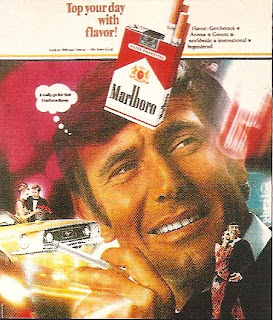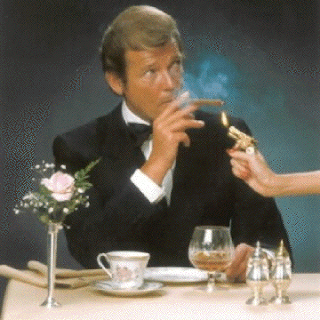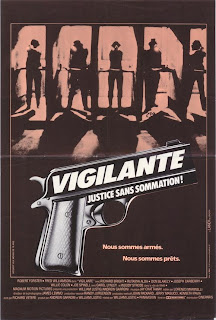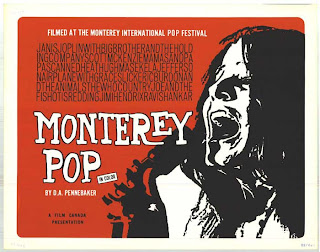What would Christmas be if Frank Capra’s It’s A Wonderful Life had been left to rot away into oblivion? How well documented would our history be if we let the original Hindenburg Disaster Newsreel Footage just be used as road fill? Imagine if Citizen Kane was on a list of lost films, and Orson Welles’ vision was only something we read about in books. The good news is that (along with over 500 other titles) these films have been chosen by the National Film Registry to be preserved. Though some of the most important films have been given shelter from decomposition, there are lots of films that are not so lucky. For every 500 hundred films saved, there are thousands that are lost forever. Considering the historical, artistic, and cultural significance of films, one would only expect society to preserve its heritage. With ever-changing technologies, films can be saved easier and cheaper than ever before, yet the situation is far from optimistic. With only a limited amount of archival facilities worldwide, a handful of schools offering restoration training, scarce funding, and a dismal job market in the field, many more films are doomed to be lost in the future. However, the recent release of Fritz Lang’s Metropolis, with an extra 25 minutes of newly restored footage, provides a glimmer of hope on the horizon of film preservation.
Film decay is inevitable; most films made in the silent era have crumbled to pieces, and early Kodak and Eastman color are turning orange and brown. The preservation of film is an uphill battle. Early nitrate film has to be stored in regulated temperature, while acetate film can get “vinegar syndrome” from a similar temperature. Most early silent films have disappeared by the movie companies themselves who destroyed nitrate film to clear space in their vaults. Nitrate film is also extremely flammable, and sometimes the vaults would combust, causing a fire and destroying more film in its wake. Sometimes these early films were just stored improperly, and the films withered away into dust. Films suffer many different obstacles in their cycle of life, including: splicing, tearing, scratching and warping. Preserving film from a monster projector is no easy task.
An interest in film archiving has been around since the 1930s, though it is only in the last 20 to 30 years that a greater emphasis has been placed on preservation. The Museum of Modern Art was one of the first to consider popular films as an art form that was worth preserving in a museum; acquisitions since 1935 have included more than just the expected art-house “avant-garde” fare associated with the museum’s identity. MoMA’s founding director Alfred Barr made a point to include popular films of the time, and this tradition has continued with the recent Tim Burton exhibition, as well as new acquisitions of mainstream directors such as Kathryn Bigelow’s complete filmography on 35MM. According to Jori Finkel, Alfred Barr was, “fueled by a vision of cinema as the most modern of modern arts; he tapped critic Iris Barry to build the library.” (Finkel)
The National Film Preservation Foundation has preserved more than 1,650 films for various organizations, and it is one of the leading saviors of classic films. Martin Scorsese’s World Cinema Foundation has also been preserving films for over 20 years. (Graser) The American Film Institute (AFI) and the George Eastman House, however, are the leaders in California and New York as they train students in the preservation of film. In fact, both the head of MoMA’s film department, Katie Trainor, and Queens College professor, Amy Herzog, interned with the George Eastman House in Rochester, New York.
The American Film Institute, founded in 1967, is the leading campus in advanced film studies. AFI trains students on film preservation, while using the newest technology. Also, AFI offers various job opportunities, including: librarian, production coordinator, and web application programmer. Located in Los Angeles, AFI also has the distinction of many renowned directors and actors as members or trustees.
In North America, some of the biggest repositories for archiving films include the previously mentioned Museum of Modern Art, as well as the University of California, Los Angeles (UCLA), which built a preservation facility in Valencia, CA; the Library of Congress, however, holds the biggest collection of all. David Packard (co-founder of Hewlett-Packard) gave $160 million to help start up the Library of Congress facility, and the Library requires $30 million each year to pay for its overhead. Every year, film titles are chosen by the United States Film Preservation Board to be archived by the Library of Congress. The National Film Registry began in 1988, and chooses films that are historically significant. According to Marc Graser’s article, Hollywood or dust! Progress is huge, but so are hurdles, “The Library of Congress has accomplished the most. The world’s largest and most comprehensive collection of movies, TV programs, radio broadcasts, and sound recordings have been acquired, preserved and made available to the public through the library’s Packard Campus of the National Audio Visual- Visual Conservation Center in Culpeper, VA.” (Graser)
The process of film archiving has changed through the years. In the past when organizations cleaned and stored films, the lifespan of a film (especially nitrate and negatives) would usually last for about 20 to 30 years (even under the best of conditions). The extinction of certain films from our history can be blamed on the materials on which they were recorded. An archivist’s biggest enemy is that of the passing of time. There are many films that exist but cannot be viewed without crumbling to pieces in the projector. Old films make for new obstacles in film preservation and restoration. According to UNESCO, “Today, more than three-quarters of the perishable and highly flammable nitrocellulose-based films made prior to the 1950s are lost forever, while some 60 per cent of the cellulose-acetate films made after 1950 are threatened by a process of deterioration known as the ‘vinegar syndrome,’ which bleaches the image if the film is not properly conserved.” (UNESCO)
Any archiving facility must be aware of the handling and dangers of nitrate and negative prints that were made before 1950. Print film made after the 1950s also must use a storage facility that can prevent “vinegar syndrome” from ruining the film. Once a film has “vinegar syndrome,” there is little chance of saving it, yet temperature-controlled vaults can help increase the film’s lifespan. Films can last for up to 100 years with temperature-controlled vaults and holographic storage. According to Marian, “Turner Entertainment Networks has its lenses focused on holographic storage for storing and retrieving its growing library of movies, cartoons and commercial spots because of its speed and portability.” (Mearian) The holographic disk is an inexpensive route when considering the storage of f1.6TB for merely a hundred dollar price tag. InPhase Technologies Inc. has a version called Tapestry.
The Museum of Modern Art once again proved to be a pioneer in film preservation when it meticulously constructed The Celeste Bartos Film Preservation Center in Hamlin Pennsylvania. Established in 1996, Celeste Bartos Film Preservation houses MoMA’s (as well as Martin Scorsese’s) entire film collection. According to the facility’s manager, Arthur Wehrhahn, MoMA carefully considered conditions when constructing its archiving headquarters. There are two main buildings on the property; one building stores regular print film, and the other stores negatives and nitrate. The first building (the main one) houses the bulk of the 14,000 films, as well as thousands of posters, forty million stills, and a massive lobby card collection. The print films have to be stored in vaults at a temperature of 45° F (30% relative humidity), and if a print is requested to be viewed, it is then moved (for at least two days) to a conditioning room that is at a temperature of 55° F (40% relative humidity). This is to ensure that condensation does not build up on the print when the film is handled at a standard room temperature.
The nitrate building is a bit colder, the safety precautions are even more complicated, and the structure, itself, is actually two constructions in one. Inside the vaults, the nitrate film tins are stored in carefully measured shelving that prohibits the nitrate from spontaneous combustion because the tin casings cannot pop open. Nitrate can actually combust if temperatures go beyond 100° F, so it is extremely important to maintain a cold environment at a temperature of 35° F (with 30% relative humidity). When they performed tests with various explosives and the burning of actual nitrate films, they found that when the nitrate catches fire, it shoots out from the can; consequently, they considered these dangerous factors when they designed the facility’s shelving. If a fire were to break out, a specifically designed sprinkler system would extinguish it in moments. If the fire became out of control, the roof has an emergency pop off release to allow for extinguishing. In addition, the outer shell of the building is actually another building that protects and insulates the nitrate vaults.
Protecting film from deterioration is just one aspect of preservation; restoration is often needed to repair a film before it can be presented to the public or stored for posterity. The process of film restoration is complicated one. According to Paul Read and Mark-Paul Meyer’s book Restoration of Motion Picture Film, the eight steps on how to restore films are as follows:
Step 1: A film needs to be repaired and cleaned for printing.
Step 2: Grading: The grader estimates the printer cues and printer lights needed for each scene.
Step 3: Printing: Duplication is done in a printing machine, from a negative a positive and from a positive a negative.
Step 4: Processing: The newly made duplicate negative needs to be processed, which is a chemical procedure of development of the latent image to produce a visible image and its subsequent stabilization.
Step 5: Grading: Grading of duplicate negative, which a new positive print is to be made.
Step 6: Printing: The positive film stock will be exposed in the printing machine.
Step 7: Processing: The exposed positive print needs to be processed.
Step 8: Quality check of the final positive print. (Read & Meyer, 4)
Beyond its chemical complexities, restoring films is both a time-consuming and a financially draining process. Consequently, the silent films are the films that are prioritized by archivists. Yet, many early color classics like Rear Window and Vertigo have been restored, as well as seminal 70s favorites like The Godfather and Superman.
There is a form of film archiving that is happening in our current digital age that is much cheaper than financing an archiving facility. The moving image landscape has been shifting for a time, but the general population has been viewing archived material without visiting a museum or library at all. The Internet population archives regularly on video sharing sites, like Youtube and Google Video. The way one views archived material has shifted in quality, from a warm analog to a pixilated digital image. Generations after generations have come to expect this new kind of quality, of streaming, digital break-up, stalled interrupted playability. Past film archivists, in turn, have to learn newer technologies to keep up with the digital medium. For instance, Karen F. Gracy, author of Film Preservation: Competing Definitions of Value, Use and Practice, wrote, “In the digital age, moving image preservation continues to evolve beyond its origins in the care of analog motion picture and video media. As more and more images are created, distributed, and maintained in digital form, moving image archives will no longer match the stereotypical image many of us have of stacks of rusty cans and boxes filled with quickly decomposing films and videos in need of salvation. Instead, the moving image archivist of the twenty-first century will have the even greater challenge of managing enormous collections of digital files, containing dozens of formats (most of them obsolete) and residing in networks maintained far from the archivist’s actual location.” (Gracy)
As media changes, so does the format, and what was once was film, next could be digital. One questions the uncertain future of film due to the costliness to buy it, develop it, and preserve it. With roughly 80 archiving sites worldwide, the future job market for such an occupation is anemic at best. Though if one does not mind traveling into remote areas of California and New York, and wishes to further his/ her education in film studies, then the American Film Institute and The George Eastman House offer the best follow-up to a Bachelor of Arts Degree. With the rising competition for work in Manhattan, the Museum of Modern Art requires the majority of its employees to have a Masters or a PHD in their field of work. According to the Bureau of Labor Statistics, “Although archivists earn a variety of undergraduate degrees, a graduate degree in history or library science with courses in archival science is preferred by most employers. Many colleges and universities offer courses or practical training in archival techniques as part of their history, library science, or other curriculum. A few institutions offer master's degrees in archival studies.” (BLS)
The need to preserve films will always continue, though the job description will inevitably change with technology. Many classic films have been saved through proper archiving and restoration. As restored masterpieces, like Metropolis, continue to inspire cinema fanatics, other lost gems may appear in the restoration horizon. Organizations like MoMA, AFI, Library of Congress and the George Eastman House have all been leaders in preserving our cinematic and cultural heritage. As technological advancements occur, the means to store our cinema history will improve. The process of film restoration takes many steps and is expensive, though digital archiving is offers an easier and cheaper means. The occupational world in the film medium is an uncertain path, yet an exciting one with many possibilities. The preservation of film, allows future generations to peer into the past to put into perspective the future, yet it is a reel challenge.
References with Citations and Internet URL
Bureau of Labor Statistics Site
http://www.bls.gov/oco/ocos065.htm
Finkel, Jori. "MoMA dearest: donations by the likes of Clint Eastwood and Harvey Weinstein have helped the Museum of Modern Art become a powerhouse of film collecting." Variety 397.3 (2004): S46. General Reference Center. Web. 3 Oct. 2010.
http://find.galegroup.com/gtx/infomark.do?&contentSet=IAC-Documents&type=retrieve&tabID=T003&prodId=GRCM&docId=A126164278&source=gale&srcprod=GRCM&userGroupName=jeric34891&version=1.0
Gracy, Karen F. "Moving image preservation and cultural capital." Library Trends 56.1 (2007): 183+. General Reference Center. Web. 3 Oct. 2010.
http://find.galegroup.com/gtx/infomark.do?&contentSet=IAC-Documents&type=retrieve&tabID=T002&prodId=GRCM&docId=A170113898&source=gale&srcprod=GRCM&userGroupName=jeric34891&version=1.0
Graser, Marc. "Hollywood or dust! Progress is huge, but so are hurdles." Variety 419.11 (2010): 1+. General Reference Center. Web. 3 Oct. 2010.
http://find.galegroup.com/gtx/infomark.do?&contentSet=IAC-Documents&type=retrieve&tabID=T003&prodId=GRCM&docId=A234569190&source=gale&srcprod=GRCM&userGroupName=jeric34891&version=1.0
Mearian, Lucas. "Turner Entertainment taps holographic storage: technology will replace tape- and disk-based systems." Computerworld 39.47 (2005): 8. General Reference Center. Web. 3 Oct. 2010.
http://find.galegroup.com/gtx/infomark.do?&contentSet=IAC-Documents&type=retrieve&tabID=T003&prodId=GRCM&docId=A139560424&source=gale&srcprod=GRCM&userGroupName=jeric34891&version=1.0
Meyer, Mark, Paul Read. Restoration of Motion Picture Film. Butterworth-Heinemann: Series in Conservation and Museology, (2000)
"Saving the cinematic heritage." UNESCO Courier July-Aug. 1995: 84+. General Reference Center. Web. 3 Oct. 2010.
http://find.galegroup.com/gtx/infomark.do?&contentSet=IAC-Documents&type=retrieve&tabID=T003&prodId=GRCM&docId=A17382451&source=gale&srcprod=GRCM&userGroupName=jeric34891&version=1.0
Wehrhahn, Arthur. Personal interview. 20 October 2010.













































